Hey there! So, you wanna grow your own veggies indoors? Great choice. Indoor gardening is perfect if you don’t have a yard or live somewhere with tough weather. Plus, there’s nothing better than picking fresh vegetables right from your own kitchen or living room.
Don’t worry if you’ve never grown anything before. You don’t need a green thumb to get started. With a little bit of space, some sunlight (or a good grow light), and a few basic tools, you’ll be growing tasty vegetables in no time. It’s easy, fun, and honestly pretty relaxing.
In this guide, I’ll walk you through everything you need to know. We’ll cover what to grow, how to set things up, and tips to keep your plants happy. Ready to dig in? Let’s get started!
Benefits of Indoor Vegetable Gardening
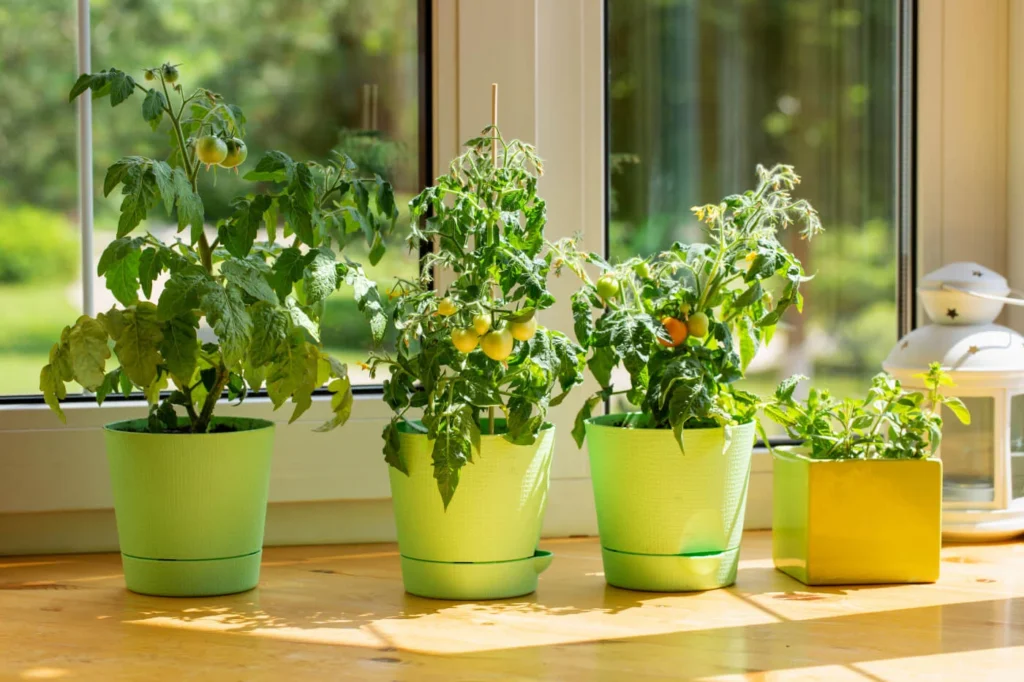
Fresh Vegetables All Year Round
Who doesn’t love fresh veggies? With indoor gardening, you can grow your own food no matter the season. Snowing outside? Doesn’t matter. You’ll still have lettuce, herbs, or tomatoes growing right in your kitchen.
Saves Money on Groceries
Store-bought veggies can get expensive, especially if you want fresh, organic stuff. Growing your own at home costs less, and you’ll always have what you need right at your fingertips.
A Fun and Relaxing Hobby
Indoor gardening isn’t just about growing food. It’s a fun and calming hobby too. Watching your plants sprout and grow feels pretty awesome, and it’s a great way to unwind after a long day.
Perfect for Small Spaces
No backyard? No problem! Indoor gardening is perfect for apartments, condos, or even dorm rooms. As long as you’ve got a little space near a window or a spot for some grow lights, you’re good to go.
What You Need to Get Started
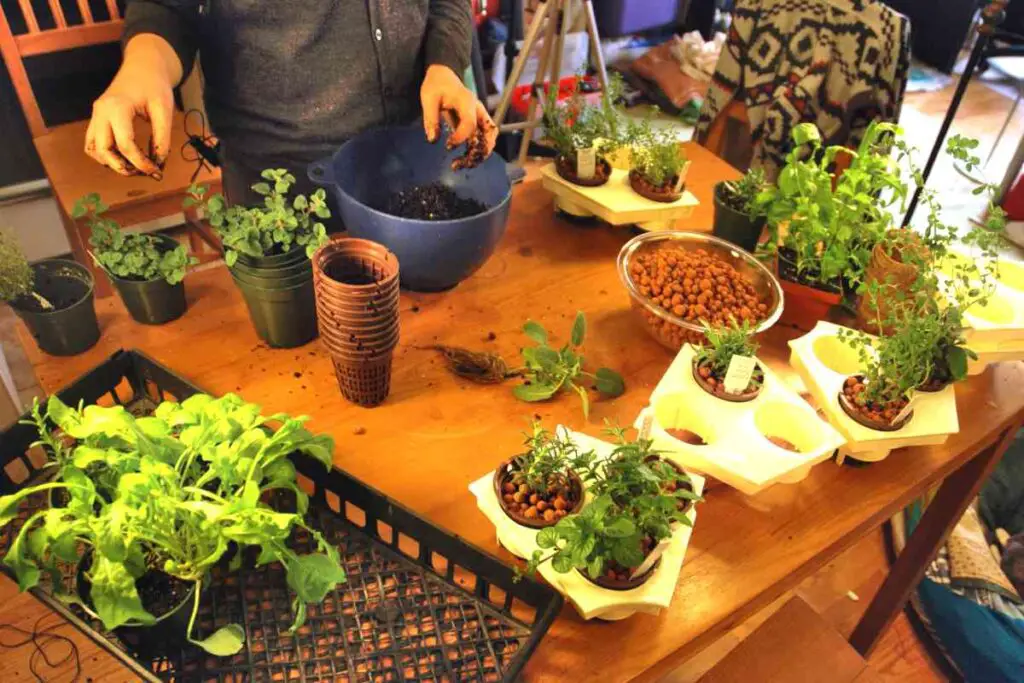
Basic Tools and Supplies
You don’t need a ton of fancy stuff to get started. Here’s what you’ll need:
Pots or containers: Make sure they have drainage holes at the bottom. You can use plastic pots, ceramic, or even repurposed items like buckets.
Soil and seeds: Use good-quality potting soil and pick seeds for easy-to-grow veggies.
Watering can or spray bottle: Plants don’t like drowning, so a small watering can or spray bottle works great.
Finding the Right Spot
Your plants need light to grow, so you’ll need to pick a good spot:
Natural sunlight: A sunny windowsill or balcony works best for most plants. Aim for 6-8 hours of light.
Grow lights: If you don’t get much sun, no worries. Grow lights can help your plants get the light they need indoors.
Choosing the Right Vegetables
Start simple. Pick veggies that are easy to grow and don’t take up a lot of space:
- Leafy greens like lettuce and spinach
- Herbs like basil, parsley, or cilantro
- Small plants like cherry tomatoes or peppers
Best Vegetables to Grow Indoors
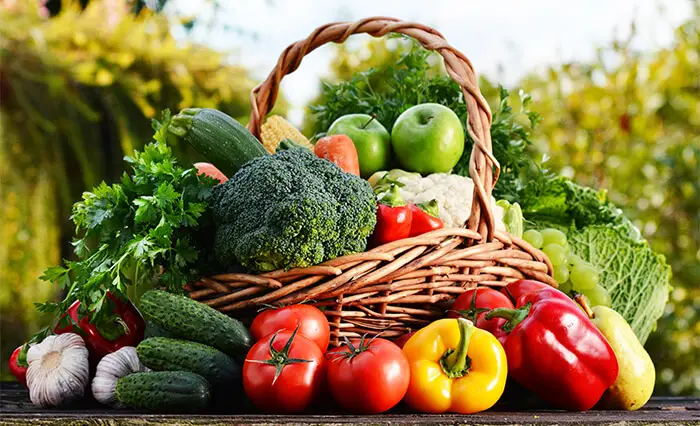
If you’re just starting out, you’ll want to pick vegetables that are easy to grow and don’t need a lot of space. Some plants take more work, but these are perfect for beginners. Trust me, you’ll see results and feel great about it.
Lettuce and Leafy Greens
Lettuce, spinach, and other leafy greens are super easy to grow indoors. They grow fast, and you can start picking leaves in just a few weeks.
Light: They don’t need tons of sun—4 to 6 hours of light works fine.
Water: Keep the soil damp but not soaked.
Bonus: You can cut what you need and the plant keeps growing!
Herbs (Basil, Parsley, Cilantro)
Herbs are perfect for indoor gardening. They don’t take up much space, and you’ll always have fresh flavors for cooking.
Light: They need about 6 hours of sunlight or grow light every day.
Water: Don’t overwater—herbs like their soil a little drier between drinks.
Tip: Trim the leaves often. It keeps the plant healthy and growing strong.
Cherry Tomatoes
Cherry tomatoes are small, but they grow like champs indoors. You’ll feel pretty proud when you see those little red tomatoes popping up.
Light: They need 8-10 hours of bright light, so a grow light might help.
Water: Tomatoes like moist (not wet) soil. Check the top of the soil before watering.
Support: Use a small stake or stick to keep the plant standing tall as it grows.
Peppers
Bell peppers or smaller chili peppers grow great indoors, and they add some fun color to your space. Plus, they’re tasty!
Light: Peppers need at least 8 hours of light every day.
Water: Keep the soil evenly moist but don’t overdo it.
Bonus: Peppers are pretty low-maintenance once they get going.
Carrots and Radishes
Carrots and radishes are root vegetables, so they grow down into the soil. They’re easy to take care of and don’t need much attention.
Light: They do fine with about 6 hours of light daily.
Water: Keep the soil damp and soft so they can grow down easily.
Tip: Use a deep container to give them plenty of space to grow.
Related Topics:
Setting Up Your Indoor Garden
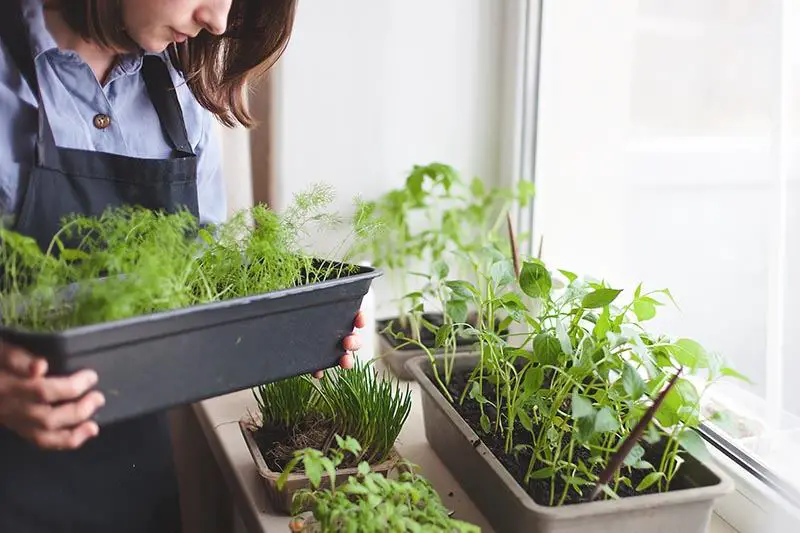
Setting up your indoor garden is easier than you think. Once you’ve got your supplies and chosen your veggies, you just need to create the right setup. Follow these steps, and you’ll be off to a great start.
Choosing the Right Containers
The container you use matters. Your plants need enough space to grow and good drainage so the roots don’t rot.
Drainage holes: Always use pots or containers with holes at the bottom. If there aren’t any, you can drill a few yourself.
Size: Small plants like herbs need less space, but tomatoes or peppers will need bigger pots.
Tip: You can use buckets, old jars, or even storage bins—just make sure they drain well.
Preparing the Soil
Don’t just use dirt from your yard—it’s not the same. For indoor plants, potting soil is the way to go.
Potting soil: It’s light, clean, and holds moisture well. You can grab it from any garden store.
Fertilizer: Some soils already have nutrients, but adding a little plant food every few weeks helps your veggies grow better.
Tip: Fill your containers, leaving about an inch of space at the top so water doesn’t spill out.
Planting the Seeds
Planting seeds is simple, but you’ve got to do it right for the best results.
How deep? Check the seed packet—it’ll tell you how deep to plant. Usually, it’s just a little below the surface.
Spacing: Don’t overcrowd your seeds. If they’re too close together, they won’t grow well.
Tip: Plant a few extra seeds in case some don’t sprout. You can thin them out later if needed.
Setting Up Lights
Your plants need light to grow, and not every home has a sunny window. That’s where grow lights come in.
Natural sunlight: Place your plants near a window that gets at least 6-8 hours of light a day. South-facing windows are the best.
Grow lights: If you don’t get enough sunlight, grab an affordable grow light. Hang it a few inches above your plants.
Tip: Use a timer for grow lights so your plants get the right amount of light without you having to remember.
Watering and Caring for Your Plants
Watering is simple, but too much or too little can cause problems.
How much water? Stick your finger about an inch into the soil. If it feels dry, it’s time to water.
Avoid overwatering: Too much water can cause root rot. Make sure any extra water can drain out of the pot.
Tip: Use a small watering can or spray bottle to gently water your plants—no flooding!
Caring for Your Indoor Garden
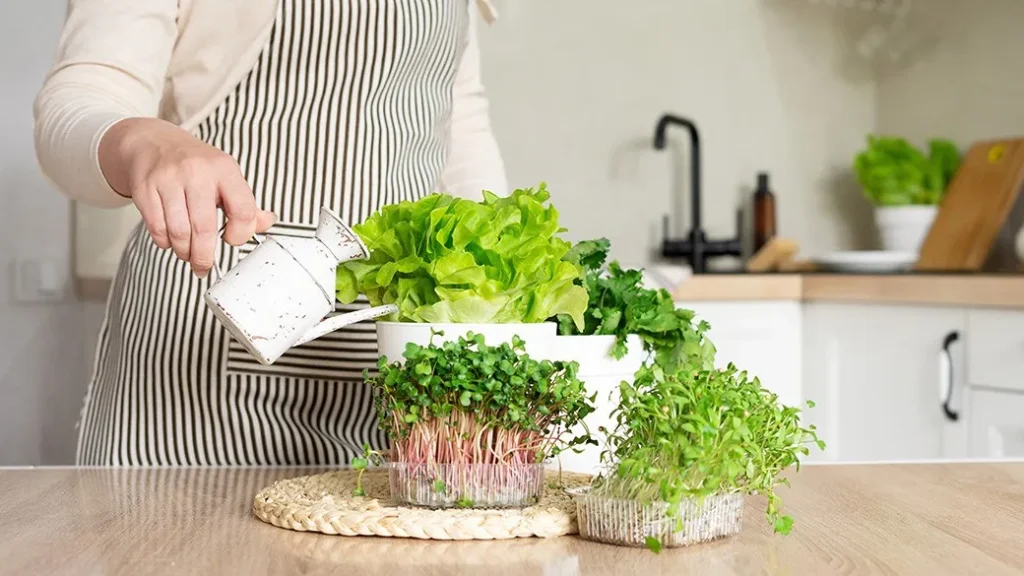
Once your plants are set up, the real fun begins—taking care of them! It’s pretty simple, but you’ve got to pay attention to their needs so they stay healthy and grow well.
Watering Tips: How Much Is Too Much?
Watering is important, but too much water can kill your plants.
Check the soil: Stick your finger about an inch deep into the soil. If it feels dry, it’s time to water.
Don’t drown them: Too much water can lead to root rot, which means the plant will die. Make sure your pots have drainage holes.
Tip: It’s better to underwater than overwater. Plants can recover if they’re too dry, but not if their roots are soaked.
Light and Temperature Needs
Plants need light and the right temperature to grow.
Sunlight: Most veggies need at least 6-8 hours of light a day. Use a sunny window or a grow light if needed.
Keep it warm: Plants grow best in temperatures between 65-75°F (18-24°C). Keep them away from cold drafts.
Tip: If using grow lights, make sure they’re not too close to the plants—they can get burned.
Dealing with Pests and Plant Problems
Even indoors, plants can sometimes get pests or other problems.
Watch for bugs: Check the leaves for tiny bugs like aphids or spider mites. If you see them, spray the plant with soapy water.
Yellow leaves: This usually means too much water or not enough light. Adjust as needed.
Mold: If you see mold on the soil, let it dry out a bit and make sure there’s good airflow around the plant.
When to Harvest Your Veggies
The best part of indoor gardening is harvesting! Knowing when to pick your veggies is key.
Lettuce and herbs: You can snip the leaves as soon as they’re big enough to eat. The plant will keep growing.
Tomatoes and peppers: Wait until they’re fully colored and firm before picking.
Root veggies: For carrots or radishes, gently check their size by pulling up a little soil.
Common Beginner Mistakes
If you want your indoor garden to thrive, a few simple tips can make a big difference. Don’t worry—it’s all easy stuff that anyone can do.
Start Small
Don’t try to grow too much at once, especially if you’re new to this.
Pick 2-3 veggies: Start with easy plants like lettuce, herbs, or cherry tomatoes.
Learn as you go: Once you get the hang of it, you can add more plants.
Tip: It’s better to care for a few plants well than struggle with too many.
Keep a Routine
Plants love consistency. Try to set a schedule for watering, checking light, and caring for them.
Water regularly: Check the soil every few days to see if your plants are thirsty.
Use timers: If you’re using grow lights, set a timer so the plants get enough light each day.
Tip: Put a reminder on your phone to make sure you don’t forget!
Pay Attention to Your Plants
Your plants will tell you if something’s wrong—you just have to look for the signs.
Droopy leaves: Usually means they need water or better light.
Yellow leaves: This can mean too much water or not enough nutrients.
Tip: Don’t panic. Small problems are easy to fix if you catch them early.
Keep It Clean
A clean garden grows healthier plants.
Wipe down leaves: Dust can block sunlight, so clean the leaves gently every couple of weeks.
Clean your pots: If you reuse containers, wash them out before planting new seeds.
Tip: Good airflow around the plants helps prevent mold and bugs.
Be Patient
Gardening takes time. Plants don’t grow overnight, so be patient and enjoy the process.
Check progress: Look for little changes like new leaves or sprouts popping up.
Celebrate small wins: Even one tomato or a handful of basil means you’re doing it right!
Tip: Gardening is about learning. Mistakes happen, but you’ll get better every time.
Conclusion
Indoor vegetable gardening is a simple and rewarding hobby that anyone can do, no matter how much space you have. By starting small, choosing easy vegetables like leafy greens, herbs, and cherry tomatoes, and creating the right setup with proper containers, soil, light, and water, you’ll see success in no time.
Taking care of your plants is all about routine—watering when needed, watching for problems, and giving them enough light.
Pay attention to the little details, and you’ll be harvesting fresh, homegrown veggies right from your kitchen or living room.
Remember, it’s okay to make mistakes along the way. Gardening is a process, and you’ll get better as you go. With some patience and care, you’ll soon enjoy the taste of vegetables you grew yourself. So, grab your seeds, get started, and have fun with your indoor garden!
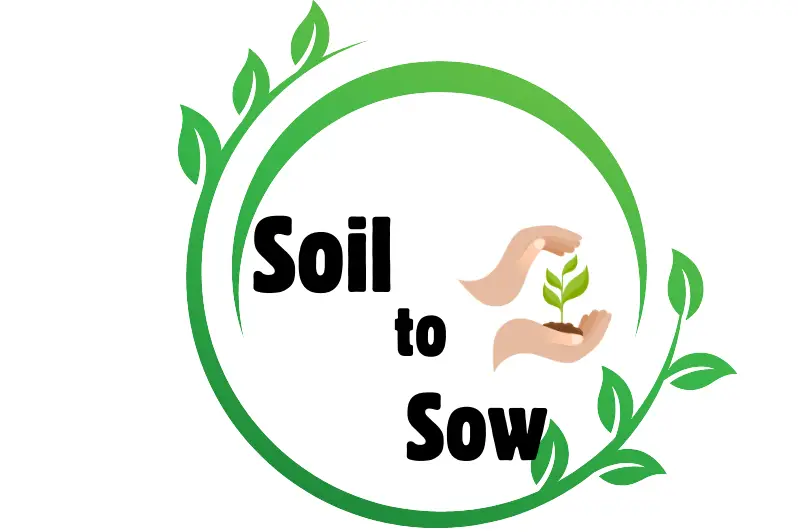

4 thoughts on “Indoor Vegetable Gardening For Beginners: A Guide”